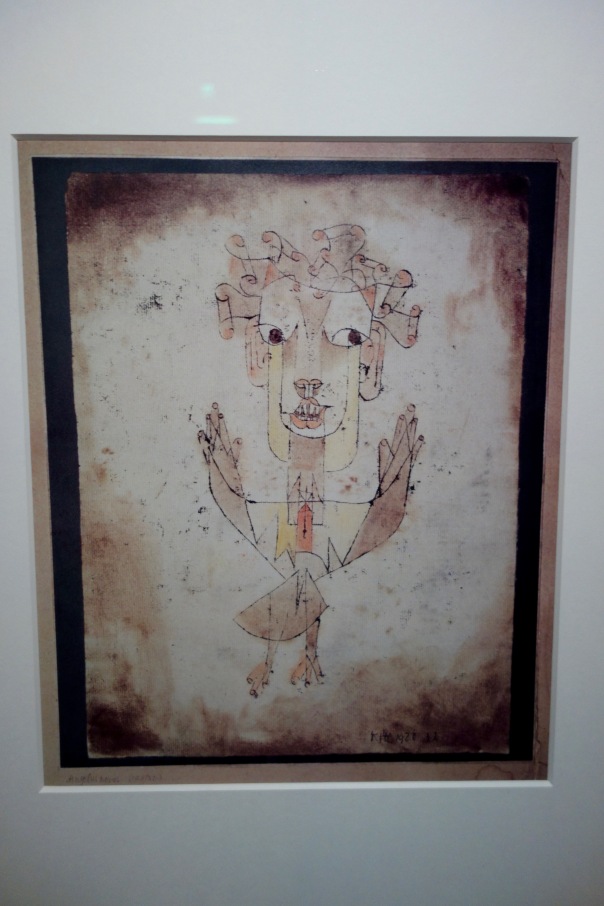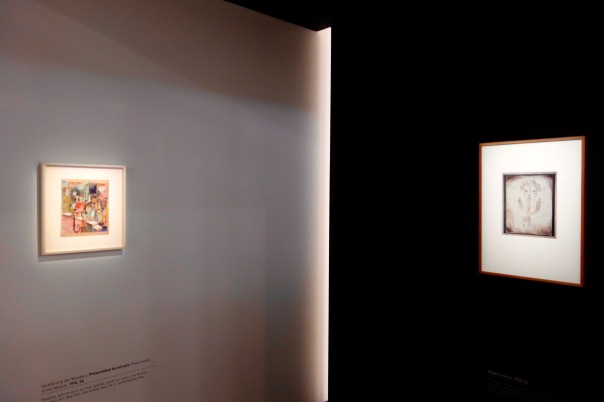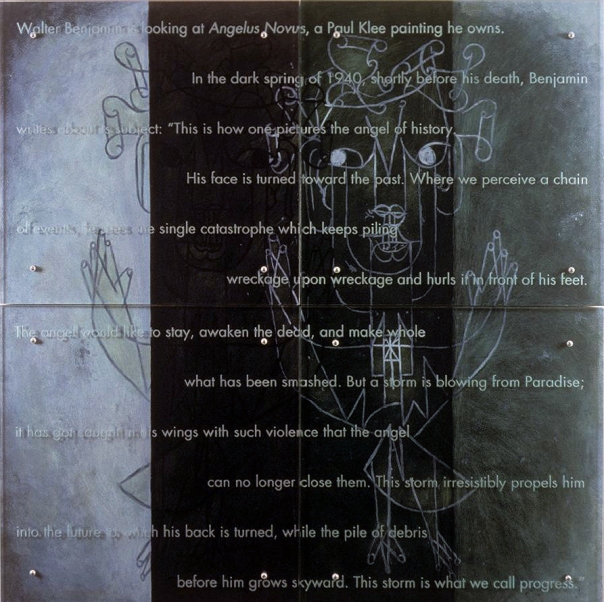
Paul Klee, Angelus Novus, 1920, Israel Museum, Jerusalem, on view at the Centre Pompidou, Paris
At the Centre Pompidou the other day, I met up again with Paul Klee’s famous painting of an angel, Angelus Novus, made famous by German philosopher, Walter Benjamin, in his posthumously published book, Theses on the Philosophy of History. It is on view in a sprawling Klee exhibition there until August 1, 2016. https://www.youtube.com/embed/nI0bkR_x2Q4

Installation view of Angelus Novus with the other Klee painting Walter Benjamin owned, Presentation of the Miracle, 1916, Museum of Modern Art, NY
Seeing it there took me back to the year 2000. It was then that I re-painted Angelus Novus for a solo exhibition devoted to angels (scroll down) at the Bernice Steinbaum Gallery in Miami. Klee’s painting mystified me. I had read about Benjamin buying the painting from Klee, and then writing about it. His words, while powerful and disturbing, seemed to me to bear little relationship to what I saw in the image: an almost gleeful, goofy, alert figure, centered in a bright clearing. Difficult even to discern any wings. How to reconcile this with the dark despair of Benjamin’s text?
Quoting Benjamin’s text about the angel on the glass over my painting, I superimposed Klee’s image with its negative opposite to suggest multiple readings. I’ll leave it to readers to decide what Klee’s angel has to say!

Ken Aptekar, Walter Benjamin is looking, 2000, 60” x 60” (153cm x 153cm) four panels, oil on wood, sandblasted glass, bolts TEXT IN GLASS: Walter Benjamin is looking at Angelus Novus, a Paul Klee painting he owns. In the dark spring of 1940, shortly before his death, Benjamin writes about its subject: “This is how one pictures the angel of history. His face is turned toward the past. Where we perceive a chain of events, he sees one single catastrophe which keeps piling wreckage upon wreckage and hurls it in front of his feet. The angel would like to stay, awaken the dead, and make whole what has been smashed. But a storm is blowing from Paradise; it has got caught in his wings with such violence that the angel can no longer close them. This storm irresistibly propels him into the future to which his back is turned, while the pile of debris before him grows skyward. This storm is what we call progress.” Collection: Andrew Sheinman & Eleni Tsanos Sheinman, New York, after Paul Klee, Angelus Novus, 1920, Israel Museum, Jerusalem